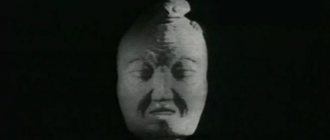At birth, babies are already endowed with basic emotional experiences. The feeling of fear is also present in the little man, as it is transmitted at the genetic level, and is the main inclination of the self-preservation instinct of each individual. As a result, children from an early age are taught that dangerous objects, strangers and spontaneous actions can cause harm to health.
Parents regularly try to explain, giving many examples. But you shouldn’t dwell on this so that your child’s fears do not develop into a phobia. Moreover, not all fears should be encouraged.
Almost all children have a fear of the dark. Therefore, unable to withstand lengthy negotiations with the child about the need to go to bed, or not wanting to listen to his screams or witness hysterics with tears, parents agree to put the child next to them.
But there are also those who, despite everything, leave the child in their room alone with their fears. And some simply turn on an intricate night light, and the child calmly falls asleep in the cozy twilight.
Soon the night light can be turned off. However, this problem should not be ignored; it is better to figure out why the child is afraid of the dark.
General factors of childhood fear
If a child begins to be afraid of the dark, the reason is either that he is too young, or that this was caused by specific frightening incidents or the behavior of loved ones. At the age of every year up to 10 years, fear in children is caused by different factors. But common causes have also been identified for all ages:
Fear can arise even at the stage of intrauterine development, if the mother was very scared or nervous during pregnancy, and manifest itself in the already born baby. This is due to the fact that the brain of the fetus, which shares blood circulation with the mother, has remembered her body’s physical reaction to stress.
Sometimes children who sleep alone in the room at night experience fear in the dark - in humans this is a subconscious fear of loneliness. Moreover, this is typical even for newborn babies.
Children of older parents are neurasthenic, because they care about them too much and run to them at the first peep. The child becomes infantile and therefore susceptible to various phobias, including fear of the dark.
Symptoms
Many kids are afraid to fall asleep in the dark. It is important to be able to distinguish between normal fear and phobia. If the baby feels normal when the night light is on, does not throw tantrums when the parents leave his room, and his health is normal, there is no reason to worry, the fear will soon go away on its own, just do not try to cure the child of fear with darkness, forcing him to suppress it.
If you have a phobic disorder, the following symptoms are observed:
- tremor of the chin or fingers;
- fear of being alone in a room;
- fear of walking down the street when it begins to get dark;
- panic at the sight of a dark room, an unknown place;
- tachycardia;
- dyspnea;
- hysterics;
- decreased body resistance to viruses;
- speech disorders, delayed psychomotor development.
Emotional factors leading to fear of the dark
All people with a developed imagination, and children in particular, tend to “finish” the outcome of a given situation when the events have not yet come to an end.
In this case, this is a fear not of the darkness itself, but of the unknown and, quite possibly, very terrible that may be hidden in it. After all, without light the eyes cannot see anything. It costs nothing for a little dreamer to imagine a monster in his mind’s eye, and to be truly afraid of him.
Here's what you need to do so that only the evil heroes from good fairy tales for children who are afraid of the dark come to life in their imagination and don't let them sleep:
Frightening that an unknown Babai will come and take away - if the baby does not eat well, and an Evil Wizard in a black cloak - if he indulges. Falling asleep in a dark room and relaxing, children, like adults, mentally replay the events and experiences of the past day. The imagination will certainly draw these images, and they will materialize in the form of real horror of the dark.
Watch thrillers in front of your children and tell creepy stories in great detail. Vivid images are always remembered; the brain can associatively reproduce them at any time, especially if the room is dark.
Watch the news with your children when they talk about disasters. Any image from the plot, even if marked out of the corner of the eye, can become a catalyst for fear of the dark.
You don't need to do all this. Also, one should not prohibit a child from doing too much; on the contrary, give him freedom of action and entrust him with various feasible tasks. Then, from childhood, the baby will be sure that reality is different from fairy tales, and in order to disperse the terrible Monsters of the Dark, he just needs to turn on the lamp above the crib. So that the child understands that he can make light and drive away nightmares independently and instantly.
Let's rush to the aid of the cowards
What can you do to get over this fearful stage as quickly as possible and eliminate your childhood fear of the dark? After all, you and I understand that it will not be possible to brush aside this problem and hope that fears will go away on their own is a big mistake.
The easiest way out of the situation is advice from a psychologist. That's why they are doctors, to learn themselves and teach us how to cope in such situations. Confidential conversations allow you to find the reason why you are afraid. But you can do something on your own, without the help of doctors!
- A night light and a loosely closed door will give you confidence and add a bit of courage.
“I can hear everything that’s happening in your room” - such parental words will become an indispensable straw in the fight against fear. A constant feeling of adult support will gradually eliminate children's fears. - Why does a child need foreign cartoons about monsters and ghosts? Why not include the domestic Cheburashka or Leopold?
I agree that heroes with strange heads, one-legged and one-armed ones can be the kindest of souls, but they will definitely give rise to the thought in a child’s head: “If there are good ones, then there are also evil ones, and they will definitely come to me as soon as the lights go out!” And the desire of parents to cope with strange creatures with the help of spells and magic sprinklers will add fuel to the fire: “Since mom is fighting a windmill, that means it exists!” - The conversation of the wind outside the window, which tirelessly rattles the neighbor's window, the muttering of the TV behind the wall, giving way to various advertising shouts, the creaking of doors in the entrance due to a draft - so many reasons to listen every second and imagine terrible pictures before your eyes! It's time to shout out these terrifying sounds.
Turn on the music! The sound of the sea surf, the singing of birds, lullabies and simply audio stories will make children's ears hear only pleasant sounds. - Have you tried playing with the dark? Here the saying is put to the test: a wedge is knocked out with a wedge. In each apartment there are places where you can go for a short time, but do not turn on the light. Well, for example, go with your child to wash your hands, but without light, find the necessary textbook or pen in the semi-darkness. You can also play hide and seek and blind man’s buff, build a hut out of chairs and climb into it to tell jokes and crunch cookies.
In addition, a dark room is a good place for bunny lanterns to jump on different objects. In general, the task is simple - to make the darkness your friend, because friends are not afraid, they are trusted! - What does childhood fear look like? Draw it and add some fun details. Let a bow appear on the monster’s head, and the evil dog’s hair will curl into curls, the monster’s body will be covered with hearts, and Grandma the Hedgehog will have a smile stretched all over his face. And then from formidable heroes they will turn into funny eccentrics who should not be afraid.
And finally, the most important thing is a positive home environment. Goodnight hugs and kisses and a good mood from parents are the key to a calm child’s soul, in which there is no place for fear.
How to get your child to stop being afraid of the dark
Until about 8 years of age, fears are normal. Children grow up, gain experience and knowledge, and learn to think rationally. You just need to know how to quickly wean a small child from being afraid of the dark - it won’t require much effort. Measures:
- turn an evil fairy-tale hero into a good one by examining with the child the positive aspects of the character and arousing sympathy for him;
- draw a monster on paper;
- regularly assign your child simple housework so that he feels a sense of his own strength, dexterity and ability to cope with a difficult situation - this will give him confidence that he can defeat the “bogeyman” on his own;
- rearrange the furniture in the children's room so that the chest of drawers no longer seems at night like a spaceship with aliens who have come to kidnap everyone - at the subconscious level, the child will be convinced that this is just furniture, and where to put it and how to use it is up to the person to decide;
- give the child something like a talisman - a little thing that will become an “amulet against evil forces”, with which nothing threatens him.
What should parents do?
To help a child overcome fear, you need to take his feelings seriously and be sincere. Children feel it. Next, you can take a number of actions to help your child overcome this phobia.
Talk and explain that there is nothing to be afraid of
It is necessary to talk seriously, without irony, with your child about his feelings. It is necessary to find out what scares him and why, to find out who lives in the room with him at night and where he disappears during the day, why he came and how he can harm him. Thus, it will be possible to find out what exactly “provoked” the appearance of this fear. Based on the information received from the child, you need to explain to him that there is nothing to be afraid of, that you are always there and can help him in any situation.
Explore the room together
After the conversation, it is important to check the room with your child for frightening images. Turn on the night light and explore every corner. There may be a need to rearrange or remove some objects, the shadows of which create unpleasant images in the child’s fantasies.
Give a talisman
After checking the room in the presence of the parents, the child often calms down and agrees that there is nothing to be afraid of. But as soon as adults leave it and turn off the light, the fear of the dark appears again. Therefore, you can try to give him a talisman that can protect and drive away fictional monsters. This could be, for example, a dinosaur or a special night light. The main thing is for the baby to believe that this item will protect and there is nothing to worry about with it. To enhance the effect, you can tell a fairy tale in which this talisman defeats the “object” of fear.
The age at which the fear of the dark should go away
Normally, in a child who has reached the age of 8, the fear of the dark should begin to recede, and by the age of 9-10 it should disappear completely. But before the age of 10, fears are a variant of the norm; this is due to the rapid restructuring of the child’s psyche. If all this does not take the form of panic, there is nothing to worry about.
What to do if your child continues to be afraid of the dark? It should be shown to a child psychologist, since in 10% of the world's population the fear of the dark remains until the end of their lives, in 2% it goes into the pathological stage - nyctophobia. Fears from childhood remain in the human subconscious, subsequently preventing them from living fully.
4.The secret to a child's sound sleep
In one of my articles, I already wrote about the secret of a child’s sound sleep. And there we were talking about properly selected diapers for the night. That is, the article examined the issue of children under one year old.
Today I will tell you another secret to sound sleep, but for older children. I will not reinvent the wheel, but will remind you of simple truths that our mothers and even our grandmothers used.
Night sleep is very important for the health of the human body. During the whole day, a person moves, spends his energy, wastes his potential.
We replenish energy from food during meals. But the body can replenish its potential only through rest.
Children are several times more mobile than adults. These little restless creatures are ready to run, play and jump for hours on end.
Not all children eat equally well. Some people cannot be forced to eat even one spoon.
The question arises, how can a child gain strength and energy? The answer is simple, the child needs sound sleep.
The most effective and important is night sleep. It is at this time that the child’s body not only rests and gains energy, but also grows.
Therefore, the important task of parents is to make this sleep sound.
Secrets of a sound sleep:
-evening walk with the child
-evening bath with herbs or sea salt
- healthy nutritious dinner
- a kind, positive story before bed
- maintaining a sleep schedule (we put the child to bed at 21.00 or 22.00, no later!)
Here are all the secrets.
Compliance with the basic rules and sleep schedule of the child will contribute to the normal sound sleep of the baby.
Preventive measures
Due to the high tendency of children to develop a fear of the dark, it is better to prevent this fear in advance. To do this you will need:
- Limit your child from watching TV. Keep track of what movies or TV shows he watches. Internet only in the presence of adults.
- Avoid quarrels in the family, especially in the presence of the baby. The child has a very delicate psyche and reacts sharply to everything.
- Get into your toddler's daily routine. Set aside time for active games in the first half of the day.
- Provide your child with frequent walks in the fresh air.
- Make sure that the room where the baby sleeps is not stuffy. Maintain optimal temperature and humidity levels.
- Teach your child to take water procedures before bed.
- Read a good story to your child. It’s better for a toddler to fall asleep to a story read by his mother than to a cartoon.
- Never scare the baby that because of disobedience some monster, like Babaika or Baba Yaga, will take him away.
Children often encounter different fears. Fear of the dark is one of the most common. Parents should help the child cope with the emerging fear and never leave the baby alone with his problem. Follow all the recommendations on how to rid your child of his fear of the dark; if necessary, seek help from a specialist in time. Remember that it is better to take preventive measures than to later face the emergence of fears, which, although in rare cases, can develop into phobias.











